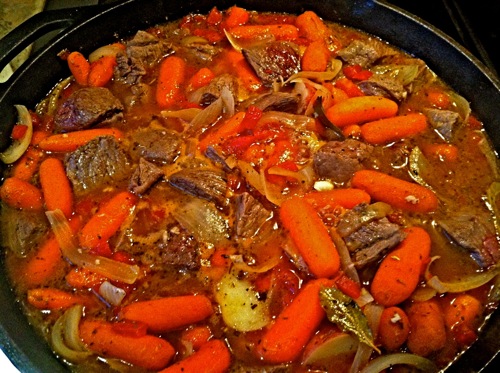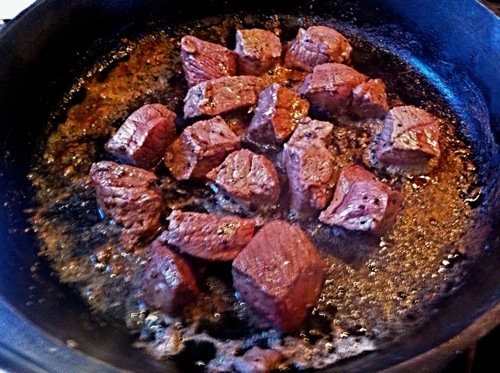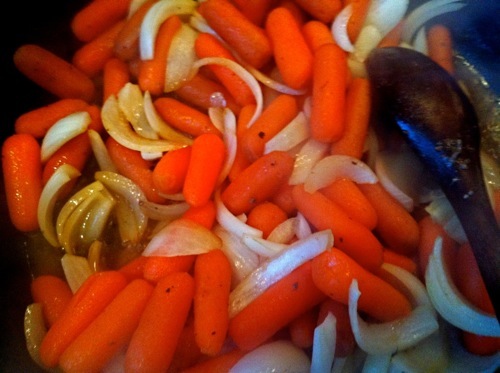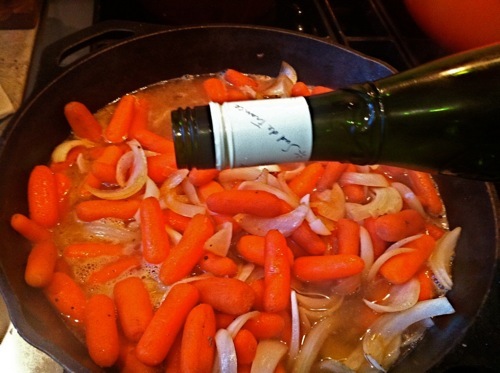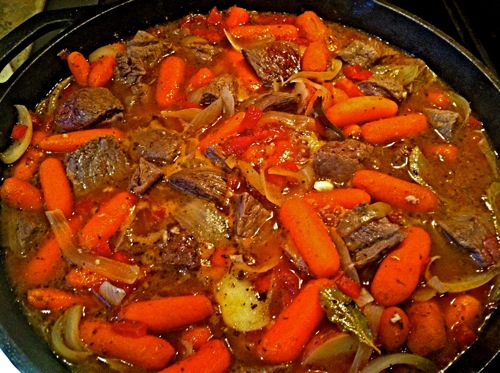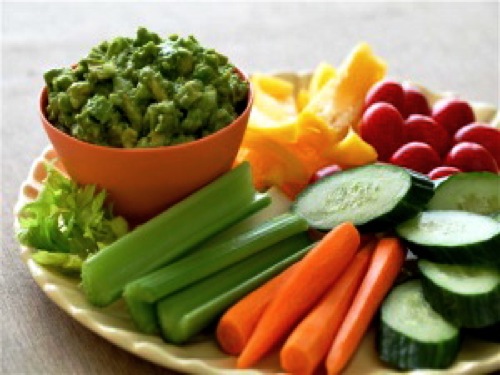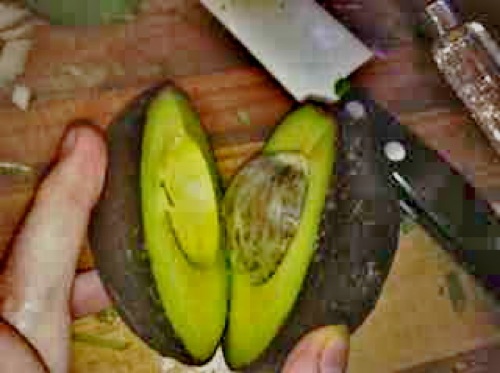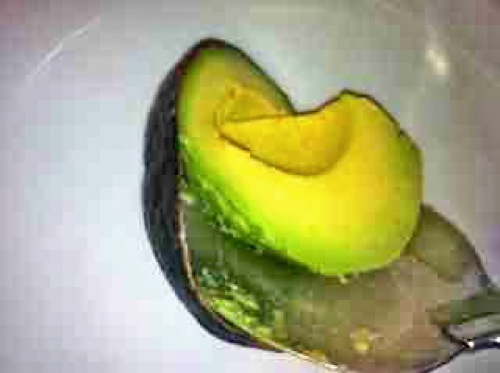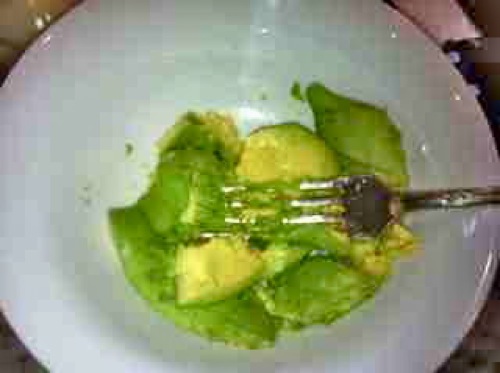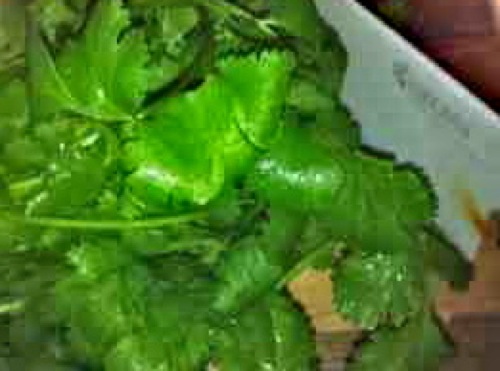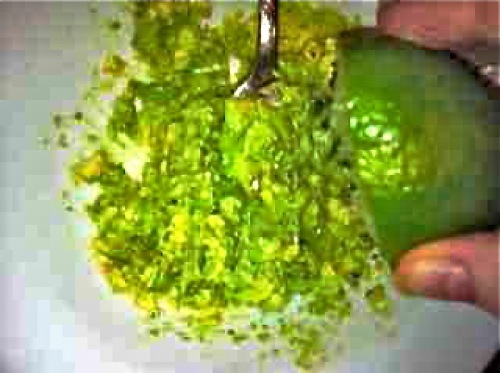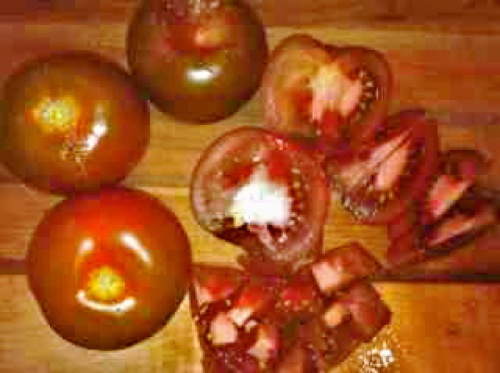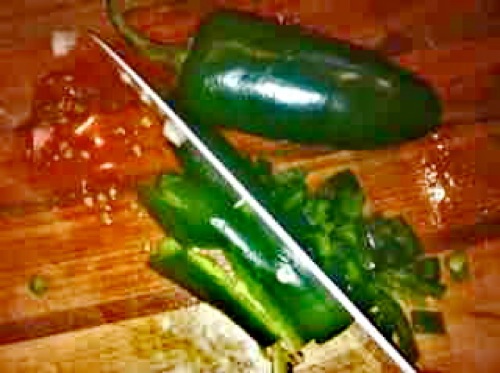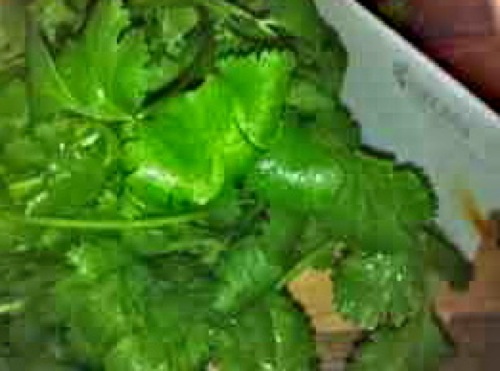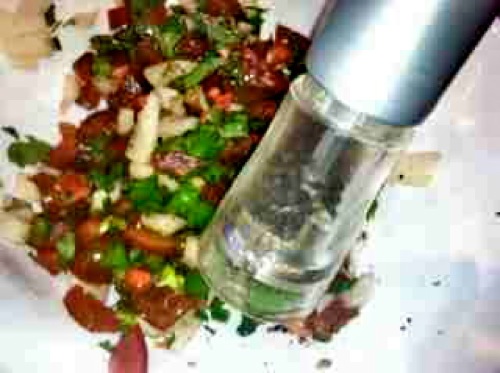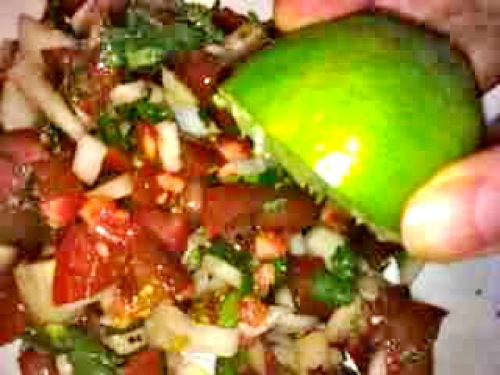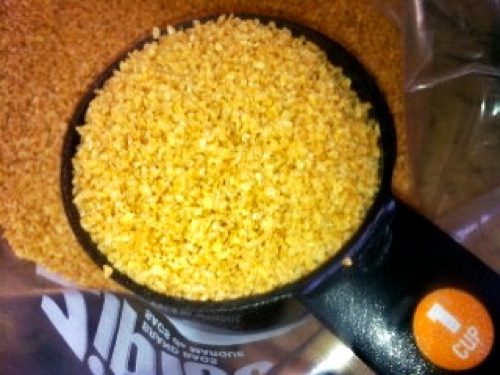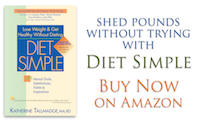Maximizing Brain Health: Do’s and Don’ts
- At February 08, 2012
- By Katherine
- In Articles, News
 9
9
My clients regularly ask me: Do certain foods affect my brain and cognition?
My answer: an emphatic Yes! What you eat profoundly affects the brain, memory, and mental function.
Are you eating “Smart” foods? Please let me know by commenting at the end of this article in “Comments.”
“Nutrients are essential for brain function, and because all human beings must eat, we are all exposed,” said Martha Clare Morris, at a National Institutes of Health conference on brain function and preventing cognitive decline.
“The dietary components with the strongest evidence to date for dementia prevention include antioxidant nutrients, fat composition, and B vitamins,” said Morris, director of Nutrition and Nutritional Epidemiology at Rush Medical College in Chicago.
Antioxidant Nutrients
“The brain is particularly vulnerable to oxidative damage due to its high metabolic activity and the presence of relatively few antioxidant enzymes… Antioxidant nutrients (vitamin E, vitamin C, carotenoids, flavonoids) are a natural defense mechanism… Of the antioxidant nutrients, the evidence for brain protection is strongest for vitamin E; that for carotenoids, vitamin C, and flavonoids is limited and inconsistent but promising,” said Morris.
But when it comes to nutrients, both too little or too much can be dangerous. So I recommend you get those nutrients from food, not from supplements, which can be harmful and may disturb the natural nutritional balance of your brain.
Some examples of foods high in brain-protecting antioxidant nutrients:
Vitamin E: Sunflower seeds, almonds, sunflower oil, safflower oil, canola oil, hazelnuts, pine nuts, spinach, turnip greens, beet greens, dandelion greens, canned pumpkin, carrot juice, broccoli, sweet potato, sweet red peppers, mangos, papayas
Carotenoids, such as Beta-Carotene (orange), Lycopene (red), and Lutein (yellow/green): Orange, red, and deep green veggies and fruits, particularly…Carrot juice, carrots, butternut squash, pumpkin (or any orange-colored winter squash), sweet potato, greens such as spinach, collards, kale, turnip greens, beet greens, avocados, orange melons such as cantaloupe, red peppers, apricots, broccoli, plums, mangos papayas, plantains, Brussels sprouts, watermelon, asparagus, tomatoes, watermelon, pistachios
Vitamin C: Citrus fruits such as orange, lemons and grapefruit, peaches, sweet and hot peppers, papayas, pineapple, strawberries, broccoli,kiwi fruit, sweet potatoes, Brussels sprouts, kohlrabi
Flavonoids: Cocoa, green and black tea, citrus fruits, dark chocolate, red wine, apples, grapes, berries (read “Berry Bonanza” for more facts about berries), numerous fruits and vegetables. Tea is filled with antioxidants and anti-inflammatory nutrients, both of which reduce brain decline, and even slow down muscle and bone breakdown. Read about tea’s health benefits in my recent Washington Post article.
Fat Composition
Fat is an essential nutrient. But the type of fat you eat trumps everything. Fat ends up in all of your body’s cells, including your brain cells. It acts as a cell lubricant, improves flexibility and communication between cells. If the fat you eat is saturated – solid at room temperature – as in butter or animal fat – this stiffens and decreases cellular flexibility and functioning. Saturated fat also raises LDL cholesterol, and high cholesterol is correlated with cognitive decline. This may be why people who eat diets high in meat and animal fats suffer from a higher rate of dementia and Alzheimer’s.
A diet high in fish, on the other hand, is correlated with a reduced incidence of brain decline. Fish oil – omega-3-fatty-acid – concentrations are highest in the brain and nervous system. They are necessary for optimal functioning of the neurons, protect cells, decrease cell death and improve nerve transmission. Emerging research indicates Omega 3s may boost levels of the brain chemicals serotonin and dopamine, decreasing depression and violence.
“In 5 out of 6 of the clinical trials where people were given either a placebo or omega-3 fatty acids, on average, the symptoms of depression have been reduced by about 50%,” says Joseph Hibbeln, a psychiatrist at the National Institutes for Alcohol Abuse and Alcoholism. “This is true even when the subjects were already on anti-depressants and failing to respond to them.”
Hibbeln’s studies found an increase in depression, violence and homicides in countries who eat less fish as compared to countries who eat more fish. It may even improve conditions such as bipolar disorder and schizophrenia.
B Vitamins
“Vitamin B12 and folate … are widely believed to be protective risk factors of cognitive decline and Alzheimer’s disease,” said Martha Clare Morris. “Vitamin B12 deficiency results in a neurologic syndrome that involves impaired cognition. Recent interest in folate deficiency as a risk factor for dementia is primarily due to its effect on raising homocysteine concentration, which has been related to the risk of developing Alzheimer’s disease… Both low vitamin B12 and low folate status are associated with cognitive decline, and high folate exposure in persons with low vitamin B12 also may be associated with cognitive decline,” said Morris.
Balance is key, so eat food high in these nutrients instead of risking an imbalance caused by an overdose.
Folic Acid (Folate): Spinach, lentils, pinto beans, black beans, blackeyed peas, greens, soybeans, broccoli, asparagus
Vitamin B12: Found naturally only in animal foods such as seafood, chicken, fat free or low fat yogurt, milk
Smart Lifestyle
Physical Activity is the primary lifestyle factor impacting your brain’s health, as well as cardiovascular disease and diabetes prevention.
“Physical activity and exercise have been found, over the past several decades, to reduce the risk of a multitude of diseases including cardiovascular disease, breast and colon cancer, obesity, and type II diabetes,” said Arthur F. Kramer, at the National Institutes of Health’s conference on brain function and preventing cognitive decline. “Many of these diseases have been associated with diminished cognitive and brain health and serve as risk factors for age-associated neurodegenerative disorders such as Alzheimer’s disease. Therefore, physical activity appears to enhance cognition and brain health through disease reduction and prevention, but also has more direct effects on both brain health and cognition,” said Kramer, professor of psychology and neuroscience, Beckman Institute, University of Illinois, Urbana.
Mood
During just one exercise bout, your brain releases chemicals called endorphins into the blood stream. They reduce pain, increase feelings of well-being and elevate your mood. If you are regularly physically active, these benefits multiply. A study published in the Archives of Internal Medicine found that a brisk 30-minute walk just three times a week relieved major depression just as effectively as an antidepressant in middle-aged and older people.
Mental Alertness
Physical activity increases the oxygen to your brain, particularly the frontal regions where it increases reaction times, as reported in the journal, Nature. Physical activity also improves memory, mental function and reduces your chances for dementia and Alzheimer’s disease. Those who walked 18 miles or more per week experienced the most improvements. These studies were reported in the Archives of Internal Medicine and the journal, Neurology.
Social Networks
“A rich social network may provide better social support and consequently better access to resources and material goods. Large social networks also may enhance brain reserve by providing intellectual stimulation,” said Laura Fratiglioni at NIH’s conference on brain function and preventing cognitive decline. “In addition, neuropathological data have shown that subjects with a similar amount of neuropathological lesions had higher cognitive performances if they also had larger social networks,” said Fratiglioni, Professor of Geriatric Epidemiology, Karolinska Institute in Stockholm, Sweden.
Leisure Activities
Most studies have suggested “a protective effect of leisure activities, especially mentally stimulating activities, against dementia,” said Fratiglioni. “These activities, which include reading, playing board games and musical instruments, knitting, gardening, and dancing, often have been associated with a reduced risk of dementia. Furthermore, a recent review of prospective studies also has concluded that physical activity may reduce the risk of Alzheimer’s by approximately 45%. However, most physical activities also include social and mental components in addition to the physical component. Indeed, complex leisure activities composed of all three components of physical, mental, and social activities seem to have the most beneficial effect.”
Are you engaging in a “Smart” Lifestyle? Eating plenty of “Smart” foods? Please comment below in “comments,” and let me know how you are doing!
The French Culinary Institute’s Veal Stew with Carrots, La Boutarde: A Step-by-Step Pictorial Guide
Excerpted from Diet Simple
This stew is perfect for a chilly winter day, in front of a fire, with good friends, glasses of wine clinking. My client, Lloyd, and I made this stew yesterday using beef round cubes instead of veal and it took less than 30 minutes’ working time. Though it needs to simmer anywhere from 1 to 2 hours for the very lean beef or veal to become tender, almost to the point of falling apart – and melting in your mouth (Lloyd insisted we imbibe just a little while cooking – I acquiesced). As Lloyd and I were wrapping up our lesson, my next client Alex popped in and was immediately transfixed by the aromas. After a taste: “Delicious! I’m making it this weekend!” she said. No surprise there, as this beautiful and simple recipe is adapted from one of my favorite cookbooks: “The French Culinary Institute’s Salute to Healthy Cooking.”
The measurements do not need to be precise. You can add more vegetables, like celery, turnips, almost anything.
The veal rump is found at a butcher’s or specialty market (in Washington, D.C., that would be Eastern Market). But call ahead to be sure, and ask the butcher to chop it into stew meat cubes. A substitute would be veal shoulder, which is typically used for stews, but it is not as lean as the rump. If you’re on a budget or do not have a butcher easily accessible, beef round cubes are an excellent substitute.
4 servings (when you quadruple the vegetables, it will make at least 6 servings, each with more vegetables and less meat)
Ingredients:
1 Tablespoon Extra Virgin Olive Oil or Canola Oil
2 Pounds Veal Rump, well trimmed and cut into 2-inch cubes, seasoned with Salt and Freshly Ground White Pepper
2 Medium Carrots, cut into 1/2-inch slices (I quadruple the carrots)
1 Medium Onion, chopped
1-1/2 Cups Dry White Wine
1 Cup Water (or more Wine)
2 Medium Very Ripe Tomatoes, peeled, cored, seeded, and chopped (Canned Plum Tomatoes are terrific – again, I quadruple the amount)
2 teaspoons Herbes de Provence*
1 Bay Leaf
3 Small All-Purpose Potatoes, quartered (I like using the small new potatoes)
Directions:
Warm the oil in a large saute pan over medium-high heat. When hot, add no more than half the veal and sear for 3 minutes, or until the veal has evenly browned on all sides. Do not crowd the pan or scorch the meat. Using a slotted spoon, transfer the veal to a Dutch oven. Continue searing the veal until all of the meat has been browned. Season with salt and pepper.
In the same pan over medium heat, saute the carrots and onions for 3 to 5 minutes, or until the onions are translucent. Lloyd decided to simplify and used baby carrots.
Reduce the heat and stir in the wine. Using a wooden spoon, stir vigorously to lift the browned bits from the bottom of the pan.
Pour into the Dutch oven (or keep everything in your saute pan if it is big enough). Add the water (or Wine), Tomatoes, Herbes de Provence*, and the Bay Leaf (Lloyd decided to add mashed garlic). Place over medium heat and bring the stew to a boil. Reduce the heat to medium-low, cover, and simmer for one hour. Add the potatoes and simmer for 35 minutes, or until the potatoes and meat are tender (it may take a total of 2 hours of simmering for the meat to become melt-in-your-mouth tender).
Taste and adjust the seasoning. Remove the bay leaf. Voila!
*Herbes de Provence is a mixture of dried herbs that often includes basil, lavender, rosemary, sage, thyme, and others. Look for it in the spice section of your supermarket.
Nutrition information per serving: 437 calories, 12 g total fat, 4 g sat fat, 22 g carbohydrate, 4 g fiber, 60 g protein
“Veal Stew with Carrots, La Boutarde” originally appeared in “The French Culinary Institute’s Salute to Healthy Cooking,” by Alain Sailhac, Jacques Pepin, Andre Soltner, Jacques Torres, and the Faculty of the French Culinary Institute (1998).
Superbowl-Worthy Guacamole: A Step-by-Step Pictorial Guide
- At February 05, 2012
- By Katherine
- In News, Recipes
 0
0
Excerpted from “Diet Simple”
A favorite dish for the Superbowl! Add Traditional Salsa Fresca to the mix or serve it alongside. Guacamole is also terrific on a sandwich, on Swedish hard bread with gravlax, and as a dip with vegetables.
Serves 12
Ingredients:
2 Avocados
1/2 Cup Chopped Fresh Cilantro (optional)
1 -2 Tablespoons Lime Juice
1/4 teaspoons salt
Ground Pepper to taste
Instructions:
Cut Avocados in half lengthwise.
Scoop out the avocado meat.
Mash with a fork.
Fold in chopped cilantro (optional).
Mix in salt, ground pepper, lime juice, and VOILA!
Nutritional Information Per Serving: 70 calories, 1 g fat, 0 g sat fat, 12 g carbohydrate, 4 g fiber, 4 g protein
Superbowl-Worthy Traditional Mexican Salsa Fresca: A Step-by-Step Pictorial Guide
- At February 05, 2012
- By Katherine
- In News, Recipes
 0
0
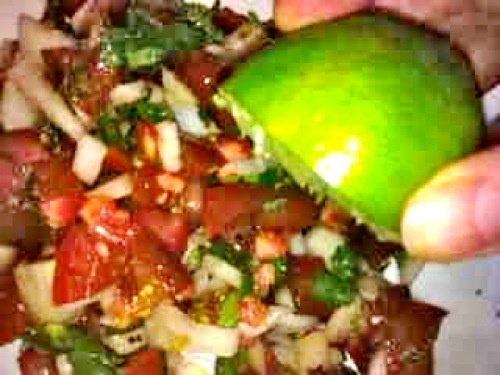
Superbowl-Worthy Traditional Mexican Salsa Fresca: A Step-by-Step Pictorial Guide
(excerpted from Diet Simple)
My fresh salsa is inspired by my Aunt Betse, who spends most of her days in San Miguel de Allende, Mexico, carrying on the tradition of my Grandfather who studied art there in the 1950s and 60s. Aunt Betse started making fresh salsa before Americans knew about it – decades ago. My salsa is a variation of hers. Use it as a dip or accompaniment at your next party. It goes fast, so make plenty! You can also use it in scrambled eggs, tortillas, or as a marinate or dressing. Throw it in plain yogurt or a mashed avocado as a dip. My measurements are the proportions I prefer, but you can vary any of the the ingredients depending on your preferences.
Serves 22
Ingredients:
1 large onion, diced (about 1/2 pound)
2 pounds fresh tomatoes, peeled, seeded, and chopped (start with about 3-1/2 pounds)
2 – 4 Jalapeno Peppers (1 – 2 ounces)
3/4 cup chopped fresh Cilantro
Ground pepper, to taste
1/2 teaspoon salt, or to taste
3 – 4 Tablespoons fresh lime juice (1 – 2 limes)
Peel the tomatoes, if you wish (I don’t always peel them), by dropping in simmering water for 10 seconds, pulling out with a fork, waiting until cool, then peel. Seed them if you’d like your salsa less watery, but this is also an optional step.With a sharp knife, chop the tomatoes.
Chop the onions and add to the tomatoes.
After removing the firey hot seeds, finely chop the jalapeno peppers and add to the mixture.
Chop the cilantro and add to mixture.
Add ground pepper and salt.
Squeeze the lime juice into the mixture and VOILA!
Nutrition Information per serving: 20 calories, 0 grams fat, 5 g carbohydrate, 1 g fiber, 1 g protein, 54 mg sodium
Super Bowl Chili with Fresh Salsa and Guacamole
- At February 04, 2012
- By Katherine
- In News, Recipes
 0
0
 Let’s watch some FOOTBALL! And, eat some delicious and spicy chili, salsa, guac and chips – the perfect SUPERBOWL FOODS.
Let’s watch some FOOTBALL! And, eat some delicious and spicy chili, salsa, guac and chips – the perfect SUPERBOWL FOODS.
They taste so good, no one will know they’re healthy. It’s called: THE “STEALTHY” HEALTHY SUPERBOWL PARTY!
Most guys I know love to watch football – even some gals. Left to their own devices, though, the food of choice may be chips, dogs, or other junk food. Here’s a way to go on the defense and tackle those calorie-laden, beer-belly-creating, artery-clogging snacks…
PIZZA, FOOT-LONG SUBS, SAUSAGES, FRIED AND BATTERED WINGS (150 calories each!) – they’re all popular sports-watching snacks. It’s what’s easy- and people are used to them. But I’ve found that when you serve healthy, tasty alternatives, they’re just as happy – just don’t announce it to everyone! In fact, words like “healthy” or “diet” are a huge turn-off for anyone – at any age – who loves good food. “Delicious!” is much more inviting. No one will know the difference, I promise! My experience is that your football lovers (uh, fanatics) will love these “stealthy, healthy” foods…
“Katherine’s Chili Non Carne” is an all-around favorite. Serve it with whole grain chips (yes, they’re fine this one time!), and add a few more bowls for dipping of Nonfat Greek Yogurt: NO ONE will know it isn’t sour cream, I swear! Fill other bowls with “Katherine’s Fresh Salsa” and “Guacamole.”
Grill beef or pork tenderloin, either as a roast or cut up on skewers, grill or broil veggies such as mushrooms, peppers, potatoes, eggplant… Make them crunchy on the outside and soft on the inside. They’ll taste as good as french fries – and this is coming from a french fry lover (yes, I must admit)!
What’s not to love? The Washingtonian agrees!
Katherine’s Chile Non-Carne
(excerpted from Diet Simple)
Try making this recipe a day ahead of time so the flavors and textures have a time to develop. I love this simple, quick chili recipe. It’s meatless but you don’t miss the meat because it’s so flavorful. You should use the amount of garlic or chili powder that appeals to you. I like it hot and spicy! I double the recipe, using a whole pound of dried black beans, so I have plenty for the week. I use this dish as a lunch or dinner alongside a green salad. I also serve it at parties as a dip next to my fresh tomato salsa, nonfat Greek yogurt, and guacamole. It’s perfect rolled up in a tortilla or stuffed in a taco with some reduced fat cheese. Great for informal super bowl or Halloween parties.
Serves 4
1 Tbsp Olive or Canola Oil, or more
1 Large Onion, Chopped
3 Large Garlic Cloves, Minced (more or less)
3 Tbsp Hot Chile Powder (try 50/50 Chipotle Chile, maybe a dash of smoked paprika, called “Pimenton,” and just a pinch of cinnamon)
1 Large Fresh Green Pepper,
Chopped1 28- oz. Can Italian Plum Tomatoes, chopped, including the liquid
1 Pound Can Kidney or Black Beans, whichever is preferred
1/2 Cup Water (To Hydrate the Bulgur)
1/2 Cup Bulgur (Cracked Wheat)
2 Seeded Jalapeno Peppers, chopped, if desired
Salt and Pepper to Taste
Saute the onions and garlic in the oil over low heat in a large pot until soft, 15 or more minutes. Add the chile powder and simmer for a few more minutes. Add the Fresh Green Pepper and cook until al dente.
Meanwhile, soak the bulgur in the boiling water for 15 minutes.
Add all remaining ingredients including the bulgur and simmer slowly over low to medium heat until flavors are well blended and vegetables are cooked to the desired consistency … a few minutes or longer, if desired. Adjust seasonings to your preference. Since many canned items were used, additional salt will probably not be needed.
Calories per serving 320, Total Fat 7g, Saturated Fat 1g, Carbohydrate 59g, Fiber 13g, Protein 12g
Katherine’s Spicy Fresh Mexican Salsa with Mild Guacamole
(excerpted from Diet Simple)
Katherine’s Spicy Mexican Salsa
(step-by-step pictorial instructions)
22 servings
Ingredients
1 large onion, peeled and chopped (about ½ pound)
2 lbs fresh tomatoes, peeled, seeded and chopped (start with about 3-1/2 lbs) (Use canned tomatoes, if good tomatoes aren’t available)
3 – 4 jalapeno peppers (1 – 2 ounces), to taste
¼ cup chopped fresh cilantro
½ tsp salt, or to taste
3 – 4 Tbsp fresh lime juice (1 – 2 limes)
Add the onion to the tomatoes. Finely chop 2 of the jalapeno peppers to start with. Taste. If you desire more heat, add 1 – 2 more jalapenos. Mix in the cilantro. Add the salt depending on your taste. Mix in the lime juice.
20 calories, 0 g fat, 5 g carb, 1 g fiber, 1 g protein
Katherine’s Guacamole
(step-by-step pictorial instructions)
12 Servings
Ingredients
2 ripe avocados
1/3 cup chopped fresh cilantro
2 Tbsp lime juice
¼ tsp salt, or to taste
freshly ground black pepper, to taste
Cut avocados in half lengthwise and pull out the pits. Scoop out the meat. Place ina medium bowl and mash, keeping some large chunks. Mix in the cilantro, lime juice and salt. Taste to adjust seasoning.
50 calories, 5 g fat, 1 sat fat, 3 g carbs, 2 g fiber, 1 g protein
Farmers’ Markets for Great Food and Celebrity Sightings
- At January 22, 2012
- By Katherine
- In News
 2
2
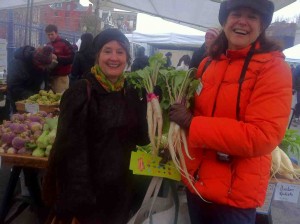
Alice Waters and Ann Yonkers at Dupont Circle Farmers' Market January 22, 2012 Photo by Katherine Tallmadge
I get so many benefits from visiting my local Farmers’ Market. First, are the people: Today, I bumped into my good friend, Ann Yonkers, the Co-Founder of Fresh Farm Markets, and with her, Alice Waters, Chef, Author, and Pioneer for a “Fresh, Clean, and Fair” Food Economy. Ms. Waters is in Washington, D.C. for several events benefiting Martha’s Table and D.C. Central Kitchen.
When Fresh Farm Market opened about 11 years ago, it improved the quality of life for me and everyone who visits. The Dupont Circle Farmers’ Market is one of the few in the area open year-round.
Every Sunday morning in Fall and Winter, I’m there tasting which apple and pear variety is the best that week. Today “Pink Lady” got first prize. To me, it’s the epitome of a perfect apple: the ideal combination of crispiness, sweetness and tartness. But other weeks, I may prefer another variety.
I will be eating an apple-a-day this week with just a tad of Pimento Cheese Spread, bought from Keswick Creamery.
Today, I also picked up some carrots and parsnips, surprisingly tender and sweet right now. I love to puree them together to create “Mashed Carrots and Parsnips with Nutmeg.”
I couldn’t resist Toigo Orchard’s Bourbon Peaches, picked perfectly ripe from their own orchards and flavored with, um, bourbon. DARN GOOD! I have many jars set aside to give as gifts to my grateful friends who don’t have access to my market. But I always have one set aside pour moi!
Tasting is one of my favorite parts of visiting the market; and that’s true for adults and children alike. When I teach children at the Capital Harvest on the Plaza (C.H.O.P.) Farmers’ Market, it opens a whole new taste experience for them. It’s amazing how children can enjoy the differences in the apples: some are sweeter, others more tart, some are crunchier, others softer, there are even different colors outside and in! Children are very observant. One week, a child blurted out that the butternut squash looked like a peanut. Well, I had to agree… a giant peanut, anyway! After a visit to the market, I can confidently say those children go back to school and their homes begging for fruits and vegetables. Studies verify all it takes is positive exposure for children to prefer healthy food.
 From my last market visit, I’m already stocked with onions, garlic, greens, and orchids. So I’m pleased to be able to enjoy another week of delicious, locally-grown fruits and vegetables. Nothing makes it easier – and better for you – than buying locally. The fruits and vegetables are picked at peak ripeness, ensuring maximum flavor and nutritional value. You’re helping save the environment, too!
From my last market visit, I’m already stocked with onions, garlic, greens, and orchids. So I’m pleased to be able to enjoy another week of delicious, locally-grown fruits and vegetables. Nothing makes it easier – and better for you – than buying locally. The fruits and vegetables are picked at peak ripeness, ensuring maximum flavor and nutritional value. You’re helping save the environment, too!
Breakfast Ideas for Diabetes Type 2: A Personal Story
- At January 21, 2012
- By Katherine
- In News
 0
0
 Diabetes has been in the news lately. But I want to assure you the diagnosis doesn’t doom you to a life of drudgery. In fact, many of my clients have found even more joy in eating and cooking after their diagnosis… Funny how, with a willingness to learn and a bit of support, you can make lemonade out of lemons (sugar-free, of course!). Here’s a story you might enjoy.
Diabetes has been in the news lately. But I want to assure you the diagnosis doesn’t doom you to a life of drudgery. In fact, many of my clients have found even more joy in eating and cooking after their diagnosis… Funny how, with a willingness to learn and a bit of support, you can make lemonade out of lemons (sugar-free, of course!). Here’s a story you might enjoy.
Today I had a lovely afternoon teaching my 84-year-old client, Richard, who has Type 2 Diabetes (T2D), how to fix healthier breakfasts. He came to me feeling “frustrated” because his blood sugars were “all over the place,” and at times he would feel dizzy, get blurred vision, and feel so awful it was hard to get out of bed. “I can’t go on like this!” he said. Richard was diagnosed with T2D four years ago. His condition worsened this past year, though, leading to a daily insulin shot in addition to several oral medications. His doctor sent him to me last week.
I quickly found out Richard, divorced, has never cooked, eats a very simple breakfast of cereal and milk, or a croissant and orange juice, and eats out at lunch and dinner. Also, a year ago, he had back surgery which severely curtailed any physical activity: Not good, if you’re trying to control blood sugar, and most probably the reason his diabetes worsened so dramatically this past year.
How to get Richard on the road to recovery? Well, many steps must be taken, but I don’t want to overwhelm him. He is 84 after all. But, if we do things right, he may have another twenty years in him!
Last week’s assignment was to start using a pedometer and record pedometer steps, blood sugar readings, and food intake. It would be particularly important to get a blood sugar reading whenever he experienced dizziness or blurred vision, if possible, to determine if his blood glucose level was the cause.
Richard also wanted to start taking cooking lessons from me because he said “I’m lazy” when it comes to eating, and grab whatever is easy. I assured him – quite the contrary – he was NOT “lazy” but perhaps just stuck in some old habits, as we all are!
Well, at today’s second session, we’re already seeing positive results. Richard kept an excellent record which revealed many things. For one, the record showed normal, and improved, blood sugar readings on days after he was more physically active. AHA! He scores a point there.
The record also showed he was eating breakfasts which were raising his blood sugar a little too much. In fact, we found – because of his diligent record-keeping, his awful feelings coincided with high blood sugar – he suspected it was caused by low blood sugar, but he was surprised to find the opposite was true – demonstrating what you can learn by taking readings at different times. With physical activity so limited, Richard must be more careful than someone who can exercise, about the amount and type of carbohydrates he eats, unless he is willing to take more medication (which he said he is trying to avoid). We discussed some breakfasts he would enjoy and settled on scrambled eggs with chopped onion, garlic and kale (what I happened to have in my refrigerator) smothering a slice of 100% whole rye toast or WASA hard bread. A second breakfast I demonstrated is my favorite oatmeal breakfast using rolled oats cooked in milk with nuts, fruit – and splenda (Richard’s choice) as a sweetener. Both whole rye and oats, you see, while they are carbohydrate, result in lower blood glucose reactions, so they’re an excellent grain choice, in moderation, if you have diabetes.
Richard helped me chop the onion and garlic, and strip the kale from it’s stem. He whisked the eggs. He weighed one ounce of nuts for the oatmeal. None of which he ever did in his life (no, he has never chopped an onion!). He was thrilled with the results. As was I. Frankly, I’m amazed at his fortitude, his willingness to learn, and his positive attitude. I hope I can be like that when I’m 84!
Richard’s goals this week: 1) Grocery shop with a list, or better yet, visit the Sunday Farmers Market where he’ll find free range eggs and locally grown onions, garlic, kale, cherry tomatoes, apples, pears, mushrooms, and more. This way, the fruits and vegetables will be so delicious, they’ll be more enjoyable, and more likely to be eaten, 2) Make one of the new breakfasts at least once this week, 3) Increase steps by 1,000 per day, and 4) See his doctor about his back pain and possibly, physical therapy.
I’m concerned about Richard’s physical inactivity as I fear the diabetes can only worsen unless he can become more active. I suggested seeing his doctor and getting a prescription for physical therapy to understand why he still has this level of pain one year after surgery. His quality of life will improve quickly if he can walk more and his diabetes will improve dramatically, but I believe he’ll need PT, acupuncture, and/or further medical treatment to do it. My motto is: Do whatever it takes and never give up! I’m glad Richard agrees.
There will be more steps for Richard to take but he is well on his way, and I’m so happy to be part of the process!
A ‘So-Called Bad Food?” Uncovering the Egg Myth…
- At January 15, 2012
- By Katherine
- In News, Recipes
 0
0
The Much-Maligned Egg Deserves More Respect! See the report on CNN…
Recipe below…
My grandmother’s favorite food in the whole wide world was eggs. She loved eggs so much, we named an egg after her. The “grandmommy egg” was soft-boiled, for three minutes. As it sat in an egg cup, we would slice off the top third so the runny yolk would form a delicious and naturally creamy sauce for the white.
Unfortunately, during the last decades of her life, my grandmother came to see eggs as poison and avoided one of her real food pleasures. Health authorities were warning the public against eating eggs for fear that they were a major cause of high cholesterol levels — the bad kind, low-density lipoprotein, known as LDL — and increased risk of heart disease.
New studies show that the caution may have been an exaggeration. Yes, increased blood cholesterol levels can raise the risk of heart disease. Eggs are high in dietary cholesterol. But does eating eggs raise blood cholesterol and cause heart disease? This is where the story gets somewhat complicated, so stay with me, folks, and I’ll try to make sense of all of this.
First, the research: Most epidemiological research — the kind of research that studies large populations over time and analyzes their diets and their health — has found no connection between eating eggs and increases in heart disease. On the other hand, controlled clinical studies — where researchers feed subjects specific amounts of cholesterol and measure the effect on blood — do show a slight increase in blood cholesterol with increases in dietary cholesterol, though how much depends on genetic factors.
Cholesterol is an important component of all human and animal cells and influences hormone biology, among other functions. Since your body naturally has all it needs, there is no dietary requirement for cholesterol. But the American diet contains plenty, since we eat a lot of animal products. All animal products contain some cholesterol, but they also contain saturated fat, an even more significant culprit in heart disease risk.
“The major determinant of plasma LDL level is saturated fat,” says Alice H. Lichtenstein, professor of nutrition science and policy at the Friedman School of Nutrition Science and Policy at Tufts University .
And while eggs are high in cholesterol (186 milligrams – 184 of those 186 in the yolk), they’re relatively low in saturated fat (1.6 grams in the yolk).
“In most people, for every 100 milligrams reduction in dietary cholesterol, one would predict a reduction in LDL levels of 2.2 points on average,” says Wanda H. Howell, professor of nutritional sciences at the University of Arizona.
In fact, during my 20 years of counseling people with high cholesterol, just reducing their saturated fat intake to a range of 4 percent to 7 percent of their calories, causes their blood cholesterols to plummet — a double benefit.
Interestingly, the Japanese, the biggest egg-eaters in the world (averaging 328 eggs consumed per person per year), have low levels of cholesterol and heart disease compared with other developed countries, especially the United States. Why? In part, it’s because they eat a diet low in saturated fat.
Americans do just the opposite. Research has shown that we usually have our eggs alongside foods high in saturated fat, such as bacon, sausage and buttered toast. This meal pattern raises LDL and makes the effect of eating eggs worse than it actually is.
So how many eggs can you eat? That depends on a number of factors. The American Heart Association no longer includes limits on the number of egg yolks you can eat, but it recommends that you limit your cholesterol intake to 300 milligrams daily, or 200 milligrams if you have heart disease or if your LDL is greater than 100. You decide where that cholesterol comes from!
Other experts go further and say an egg a day is fine.
“The amount that one egg a day raises cholesterol in the blood is extremely small, so small in fact that the increase in risk in heart disease related to this change in serum cholesterol could never be detected in any kind of study,” says Walter Willett, professor of epidemiology and nutrition at Harvard’s School of Public Health. “Elevations in LDL of this small magnitude could easily be countered by other healthy aspects of eggs.”
Based on the research, my recommendation is if you eat a healthful diet, go ahead and eat an egg a day. On the other hand, if your cholesterol is high and if you eat the typical American diet — high in saturated fat, devoid of fruits, vegetables and fiber — maybe you shouldn’t be eating an egg a day.
But will taking eggs out of an unhealthy diet make a positive difference? Probably not. I can’t tell you how many times during my career I’ve heard people say, “I’ve cut out eggs, but my cholesterol is still high!” The impact of a healthy, balanced diet cannot be denied here.
Original content by Katherine Tallmadge for The Washington Post.
Good for You
Assuming you’re eating a healthy diet, here are some ways you may benefit by eating eggs
PROTEIN Eggs are considered the gold standard that other proteins are measured against. Because of the superior amino acid mix, an egg’s six grams of protein are absorbed easily and used by the body more efficiently. The egg is also economical and calorie- controlled (74 calories).
CHOLINE Yolks are one of the best sources of this essential nutrient. Choline is needed for brain development in a growing fetus and may also be important for brain function in adults.
LUTEIN and ZEAXANTHIN These two important beneficial phytochemicals found in egg yolks (as well as kale and spinach) help prevent eye diseases, especially cataracts and age- related macular degeneration. While eggs contain less lutein and zeaxanthin than greens, these phytochemicals are more absorbable because of the presence of fat in the yolk.
VITAMIN D Eggs are one of the few natural sources of Vitamin D, important for the bones and teeth. Vitamin D helps the absorption of calcium, which is important for the heart and colon as well.
Eggs Scrambled with Onion, Garlic and Sweet Cherry Tomatoes
This is a regular meal for me any time of the day – quick, easy, delicious, nutritious!
Servings: 1
Saute 1/4 sweet onion and a smashed garlic clove over medium high heat in 1 teaspoon canola or olive oil until almost soft. Add a handful of chopped tomatoes to the pan (or any other vegetables you happen to have such as chopped spinach, kale, mushrooms, or peppers) and cook for another 5 minutes. Turn down heat to very low. In a separate bowl, whisk 2 eggs. Pour eggs into the pan containing the onion, garlic and tomato – add 1 ounce low fat cheese, if you wish. Stir continuously until eggs are cooked. Pour over toasted whole rye bread.
New Year, New Life… Seize the Moment!
- At January 03, 2012
- By Katherine
- In Articles, News
 0
0
What are your hopes, dreams and desires for 2013? The new year is a valuable opportunity to improve the quality of your life and happiness. Here’s how to make the best of it…
Now, move mindfully across the threshold into 2013 filled with ideas, possibilities and plans! Analyze people who will continue to be important, ideas to explore, places to spend time, important events and things to carry over from last year to this year.
CREATING A “SENSE OF URGENCY”
An important aspect to making major changes in the world or in your own personal habits is to feel a sense of urgency about your goal. A sense of urgency, according to The Dalai Lama in “The Art of Happiness” – and scholars in this important field of psychological research, can be achieved two ways:
1) Remind yourself of your positive vision for success. For example, visualize yourself at your goal weight, healthy, feeling energetic and confident (see “Dream” in my best-selling book, Diet Simple), and
2) Ponder the negative consequences of not making a particular behavior change (a little fear can be a good thing – but just a little). For instance, in the morning as you’re considering two options: getting out of bed to exercise or sleeping just a little longer. Ask yourself: “Do I want to feel good today? Or do I want to feel crummy today?” Another example, as you’re driving home from work and deciding to grab some carry-out or to go home to eat the healthy meal you’ve already planned. Ask yourself: “Do I want to achieve my weight loss goal (insert positive vision here) or will I accept being the same weight and having the same health problems for another year?” “Do I want to stop taking these darn medications or will I be taking them forever – and even increasing the dosage? What will my doctor say?” “What kind of example am I setting for my children, my spouse? Is this a behavior I can be proud of?” etc. You get the idea…
ACHIEVING INCREASED HAPPINESS
Outlining the consequenses of your actions and acting on your long term goals, as opposed to momentary desires, helps you grow as a person and become a happier person, according to scientific research. It increases your general happiness level because you are making decisions which contribute to your long-term goals.
THE DOWNWARD SPIRAL OF GIVING IN
Usually, when we do something that feels good momentarily, such as giving in and staying in bed for 30 more minutes of sleep in the morning instead of exercising, or grabbing a coffee cake at the coffee shop when we originally just planned on buying coffee, our happiness level may increase (“oooh, this feels yummy!”) – but it’s only a temporary blip of happiness. It goes back to the same level it did before – once the temporary experience wears off – and nothing changes for the better in our lives. We may even become more depressed as we continue to “give-in” to these unfulfilling momentary desires and continue into a downward spiral.
MAKING THE HARDER, BUT MORE SATISFYING CHOICE
If, instead, we say to ourselves, “I’m getting out of bed NOW! I’ll feel terrible if I don’t, and I’ll never achieve my goals,” or “Will stopping to get carry-out change my life for the better? I’d be better off going home and eating something healthy as I want to lose weight, lower my cholesterol, etc,” or “I really don’t need that coffee cake, and I’ll feel terrible after eating it, and will it make me happier at the end of the day?” “Will this increase my happiness for the short term? Or for the long term?” Another more extreme example might be a drug addict relapsing. It feels great momentarily, but the feeling doesn’t last.
When you make a more thoughtful decision, which contributes to your longterm health – physical or psychological – you are more likely to achieve your life’s hopes, dreams and goals, you can actually increase your happiness level, feel happier more often and grow as a person.
WHY IT’S NOT ALWAYS EASY
It is not always easy in our society to make the healthy decision. It’s easier – and the norm, in fact – to be overweight and unhealthy. But, I’m convinced it is possible to be healthy in an unhealthy world with planning, practice, determination, and support (I’m here any time you need me!) – Besides, what’s the alternative?
It takes effort to train your mind to work this way, but this is how we become better people and we advance as a society.
THE RESOLUTION SOLUTION:
HOW TO MAKE YOUR RESOLUTIONS SUCCESSFUL
“Forty to 50 percent of American adults will make New Year’s resolutions for self improvement. Scientific research indicates you are ten times more likely to change by making a New Year’s resolution compared to non-resolvers with the identical goals and comparable motivation to change,” says John C. Norcross, PhD, Professor of Psychology, University of Scranton and coauthor of “Changing for Good.”
Dr. Norcross recommends the following strategies, based on studies tracking successful New Year’s resolvers, and their differences with unsuccessful resolvers:
* Make realistic, attainable goals (See “Tiny Changes, Lasting Results” in Diet Simple’s Introduction),
*Develop a specific action plan (Fill out “Your Personal Goal Worksheet” in Diet Simple),
* Establish genuine confidence that you can keep the resolution despite the occasional slip. Confidence is a potent predictor of who succeeds in the new year! (creating your “sense of urgency” will be useful here – see above)
* Publicly declare your resolution. Public commitments are generally more successful than private decisions,
* Track your progress by recording or charting. Studies show self-monitoring one of the most important behaviors correlated with successful change (see “Write it to Lose It” in Diet Simple),
* Reward your successes (see “Get Sexy Lingerie” or “Kiss Your Spouse” in Diet Simple),
* Arrange your environment to help, rather than hinder, you. Limit exposure to high-risk situations and create reminders for your resolutions (see all of Diet Simple!),
* Expect occasional slips in your resolutions (see “Lighten Up!” in Diet Simple). Studies of successful weight loss maintainers show they experience just as many stressors and slips as weight relapsers; no one’s perfect after all (sorry to disillusion you)! The maintainers pick them self up, dust themselves off, and start all over again!
* Cultivate social support (see all of Diet Simple!). Successful weight loss maintainers are more likely to cultivate support from friends, loved ones, or professionals. It does take a village!
The Battle of the Bulge is Won at the Margins. Sweeping Dietary Overhauls are Impractical and Don’t Work Over Time!
Shrewd, Small, Concrete Changes Which Can be Easily Incorporated into Your Daily Routine Lead to Success!
Music and poetry move me deeply, and in ways I don’t always understand. All we know is after hearing something, we feel so much better. I’ve made some selections that have made a difference for me and hope you enjoy them too.
To Detox or Not to Detox?
- At January 02, 2012
- By Katherine
- In News
 0
0
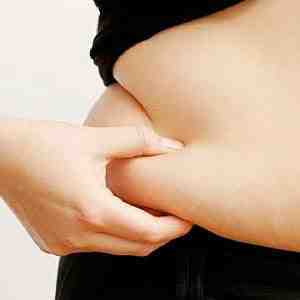 I’m upset by my holiday bloat! But I’m thankful I’ve already lost 3 pounds. How did I do it? Here are some things to consider when deciding how you should lose your “2011 pounds” to help you get 2012 off to a healthy start…
I’m upset by my holiday bloat! But I’m thankful I’ve already lost 3 pounds. How did I do it? Here are some things to consider when deciding how you should lose your “2011 pounds” to help you get 2012 off to a healthy start…
A new client shared a familiar story with me. Sarah, who has struggled with her weight for years, had just spent a week at a health spa, successfully losing three pounds. But within a few days of returning home, she had gained all of her hard-earned weight loss back – and more. She felt so desperate, she was considering a 21-day “cleanse,” but was fearful severe dieting might backfire again and wanted my advice.
Her fears were well-founded and illustrated the most frustrating dilemma of dieting: Weight loss is exhilarating, prompting a series of biological benefits which make you feel great, but too often the results are fleeting.
This struggle has been going on as long as people have been looking for quick-fix, formulaic diets. In the 1970s, it was carb-counting with Atkins or Scarsdale. The 80s brought us liquid diets (remember Oprah and Optifast?). In the 90s, low-fat diets were the rage. Then we came full circle with low-carb diets returning in the 2000s and the modern equivalent of liquid diets – “cleanses” and “detoxes” – back today.
But the challenge remains the same: You cannot “diet” forever. At some point, you must transition from the “diet” to an eating plan and lifestyle which maintains your weight and health.
A “Cleanse”:
Sarah said it would be such a relief not to have to think, or make choices, and so rewarding to lose weight quickly. I completely understand the temptation here. And these factors do make weight loss with a liquid diet easier for many people. But I encouraged Sarah, “Ask yourself: Will the weight loss stick? Yo-yoing can be demoralizing.” Though I agree it is better to try something than to stay overweight, unhealthy and feeling miserable.
If you decide to go all the way and try a “cleanse” or very low calorie diet plan, you probably will lose weight. It’s a fact: when you eat fewer calories than you burn, weight loss is a consequence. And even a liquid cleanse, if short term, shouldn’t be harmful. (Though some people experience negative consequences: constipation, nutritional deficiencies, headaches, depression/irritability, hair loss, and a lowered metabolism.)
But since by definition this is temporary, be prepared to transition slowly to healthy eating (go too fast and you’re liable to gain a lot of water weight).
The Transition:
A second option would be to start with the healthy lifestyle that you would be transitioning to. Lose weight in a sustainable way so that when you’ve lost it, the good habits are in place. I probably don’t need to tell you this is my choice, and it’s successful for the majority of people.
Based on studies of successful weight loss maintainers, here is what you should do to keep weight off once it is lost:
Living at a spa impractical? Okay, create a “Home Spa” to JUMP-START 2012 and feel as good, if not better, than you would being on a liquid “cleanse.” To re-create the Health Spa experience, Do…
Minesweep for Calorie Bombs – Banish any “risky,” fattening or unhealthy foods from the house,
Control Your Environment – Stock your home (and office) with delicious, healthy foods, and piles of clean, chopped, ready-to-grab fruit and veggie snacks,
Hit the Ground Running – Start Every Day with Physical Activity. Don’t even think about it! Before checking email, taking phone calls, or applying make-up (I know – I’m horrible!), get out the door for a walk, jump on your home treadmill, go to bootcamp or to the gym,
Eat Breakfast Every Morning – Preferably at home, so you’re not tempted by the bagel-the-size-of-your-head at the office. Skimping on breakfast usually backfires and causes over-eating later,
Eat Light at Night – Soup is ideal for feeling satisfied with fewer calories so you don’t go to bed feeling too full. Wake up hungry for a good breakfast in the morning,
Sleep at least 7 to 8 Hours – Sleep disturbances are correlated with weight problems,
It Takes A Village – Spend your time with like-minded people and avoid people who will sabotage your goals. This is an important feature of being at a spa which makes it so easy. If your spouse or friends are not on board, it will be difficult to stick with any plan,
The Battle of the Bulge is Won at the Margins. Sweeping Dietary Overhauls are Impractical and Don’t Work Over Time!
Making the Transition
(If you opt for the modified fast or cleanse)
Start by slowly incorporating healthy carbohydrates into your diet until you get to at least 160 grams daily (3 servings of dairy or calcium-fortified soy, 5 – 9 servings of fruits and vegetables, 4 servings whole grains)*
Week 1: Add a high fiber, whole grain cereal and milk for breakfast
Week 2: Add two or more fruits as mid-morning and afternoon snacks
Week 3: Add two slices of whole grain bread for a sandwich at lunch
Week 4: Add a yogurt snack
Week 5: Add a couple of high fiber, bean-based vegetarian meals to your week
*add carbs back too fast and you risk gaining a lot of water weight
This may not be considered a genuine “cleanse” but that’s good! It contains real food you can actually chew…Delicious, satisfying, loaded with nutrients and naturally fiber-rich, for natural “cleansing!”


